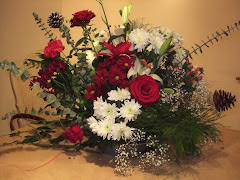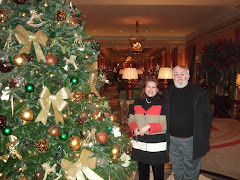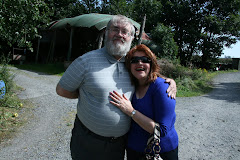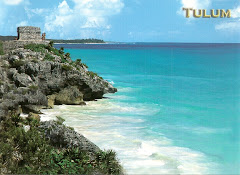Friday, 30 April 2010
Fame Or Infamy book by Stephen Powell
I'm looking forward to reading Fame or Infamy about the JTR dairy saga. With credits to Celtic Research. BTW... yesterday we had the meeting with the producers for the fifth series of ' Heir Hunters' and we were informed that the viewing was high so this is why they will produce another series. Also, the BBC has the ability to monitor when people see the programme at the beginning, middle and end. The good news is that people watched it from beginning to end without flicking the channel for another one, that is excellent news, to have people glued to the television when we appear. All in all, the horizon is looking good. In this series we will be allowed more time to shoot it which will begin soon and this new series will be shown by the end of January on BBC 1 so.. put it in your calendar. Anyway... going back to Stephen Powell's book I will be interested in reading the contents.
Thursday, 22 April 2010
Women Painters
Hello ! Well, as you can imagine with the volcano cloud, our flight to Spain was cancelled but it wasn't bad at all, if you are going to be left without travelling, its good when you are left stranded at home rather than abroad so we had a nice night in Liverpool in a room where... oh no ! horror of horrors, Tony Blair had stayed at and a few other people from the world of music who I did not recognize apart from the Beatles. Anyway...we headed to The Walker Gallery in Liverpool the next day, where they are currently having an exhibition from their own collection of ' Women Painters ' which I found very interesting there was a painting of Andromache fainting at the unexpected sight of Aeneas on his arrival by ANGELICA HAUFFMAN who was the daughter of a Swiss painter, she was the first female artist to chanllenge the male monopoly over History painting. History painting took subjects from the bible, history, literature & classical mythology. These subjects were usually deemed too challenging for women. Despite such discrimination, Angelica Hauffmann became a highly respected professional painter with Royal patrons. In 1768, she was one of two female founding members of the Royal Academy of Arts. No other woman was elected as a full or associate member until 1922, when ANNIE SWYNNERTON came to the scene, there is a beautiful painting of hers on show called: ' The Sense Of Sight. Annie was born in Manchester. ( 1844-1933 ) She founded the Manchester Society of Women Painters with the artist SUSAN ISABEL DACRE. In 1895, she was the second, and last woman to sit on the Liverpool Autumn Exhibition Hanging Committee in 1922 and at the age of 78, she was the first woman to be elected as an associate member of the Royal Academy since its foundation in 1768. Her painting ' The Sense of Sight ' ( an angel overwhelmed at the wonder of what they can see, perhaps relates to the importance of sight to an artist and the joy of the visual world.
ELIZABETH- LOUISE VIGEE - LE BRUN (1755-1842)
This artist was taught by her father and financially abused by her art-dealer husband whom she later divorced. She was official painter to Queen Marie-Antoniette but in 1789, the French revolution forced her into exile for 16 years. During this time, she travelled Europe receiving commissions from aristocratic and Royal patrons as a celebrity artist known for her sensitive portraits of women, she was the obvious choice to paint the image- conscious Emma Hamilton, Emma is shown in Naples performing one of the dances that made her famous. It was painted a year, after Emma's marriage in Naples to Sir William Hamilton and 1 year before she met her lover Lord Nelson.
I also found The Dictionary of British Women Artists by Sara Gray, where they had written the name of my ancestor Maria Spilsbury wrong.. they had her as Mary Spilsbury.
Then there was ROSA BONHEUR her father was a social-reformist painter who believed in art education for women. She specialized in painting animals and won fame in her native France with her 5 metre wide painting ' The Horse Fair' it proved so popular, that it toured the U.S. several times, selling thousands of printed reproductions and in Fef 1856 it was exhibited in Liverpool. She gained her sympathetic knowledge of animals by keeping a small zoo and visiting slaughter houses & dissecting animal remains. Mmm. It looks like she took to heart Leonardo's advice ! Then there was ROSALBA CARRIERA she came from an artistic Venecian family. Her father was an amateur artist and her mother was an embroiderer and lace-maker, she started by painting miniature portrait paintings on snuff boxes but moved to life-size portraits in pastel, for which she became internationally reknowned. She was particularly famous among British tourists such as the author and collector Horace Walpole ( 1717-1797) who visited Venice in 1741. So great was the demand for her work among British visitors that she once complained of ' being attacked by the English. ELIZABETTA SIRANI - her artistic skill and beauty brought her European fame and female students. She fed her celebrity with self-portraits, one shown there which was owned by the curator of the Ufizzi collection in Florence. She also entertained visitors to her studio in Bologna with conversation and song. Her father was a painter and all three of her daughters became successful painters, she specialized in religious art. Her early death aroused her father's suspicions that she had been poisoned by her maid. In fact, she probably died from a stomach ulcer brought on by overwork. Or it could have been lead poisoning ! There are paints like White Flake that contains lead. LAVINIA FONTANA she was one of the most successful female artists in the 16th century ( 1552 - 1614 ) and she was the first woman to paint large alterpieces. She was chiefly noted for her portraits. She was trained by her father, a painter from the city of Bologna, known for its support for woman artists. The painting that its on show is based on a drawing by Michelangelo called ' Silentium ' There were a few more. The exhibition is worth seeing.
ELIZABETH- LOUISE VIGEE - LE BRUN (1755-1842)
This artist was taught by her father and financially abused by her art-dealer husband whom she later divorced. She was official painter to Queen Marie-Antoniette but in 1789, the French revolution forced her into exile for 16 years. During this time, she travelled Europe receiving commissions from aristocratic and Royal patrons as a celebrity artist known for her sensitive portraits of women, she was the obvious choice to paint the image- conscious Emma Hamilton, Emma is shown in Naples performing one of the dances that made her famous. It was painted a year, after Emma's marriage in Naples to Sir William Hamilton and 1 year before she met her lover Lord Nelson.
I also found The Dictionary of British Women Artists by Sara Gray, where they had written the name of my ancestor Maria Spilsbury wrong.. they had her as Mary Spilsbury.
Then there was ROSA BONHEUR her father was a social-reformist painter who believed in art education for women. She specialized in painting animals and won fame in her native France with her 5 metre wide painting ' The Horse Fair' it proved so popular, that it toured the U.S. several times, selling thousands of printed reproductions and in Fef 1856 it was exhibited in Liverpool. She gained her sympathetic knowledge of animals by keeping a small zoo and visiting slaughter houses & dissecting animal remains. Mmm. It looks like she took to heart Leonardo's advice ! Then there was ROSALBA CARRIERA she came from an artistic Venecian family. Her father was an amateur artist and her mother was an embroiderer and lace-maker, she started by painting miniature portrait paintings on snuff boxes but moved to life-size portraits in pastel, for which she became internationally reknowned. She was particularly famous among British tourists such as the author and collector Horace Walpole ( 1717-1797) who visited Venice in 1741. So great was the demand for her work among British visitors that she once complained of ' being attacked by the English. ELIZABETTA SIRANI - her artistic skill and beauty brought her European fame and female students. She fed her celebrity with self-portraits, one shown there which was owned by the curator of the Ufizzi collection in Florence. She also entertained visitors to her studio in Bologna with conversation and song. Her father was a painter and all three of her daughters became successful painters, she specialized in religious art. Her early death aroused her father's suspicions that she had been poisoned by her maid. In fact, she probably died from a stomach ulcer brought on by overwork. Or it could have been lead poisoning ! There are paints like White Flake that contains lead. LAVINIA FONTANA she was one of the most successful female artists in the 16th century ( 1552 - 1614 ) and she was the first woman to paint large alterpieces. She was chiefly noted for her portraits. She was trained by her father, a painter from the city of Bologna, known for its support for woman artists. The painting that its on show is based on a drawing by Michelangelo called ' Silentium ' There were a few more. The exhibition is worth seeing.
Subscribe to:
Comments (Atom)
































































.jpg)
.jpg)









































